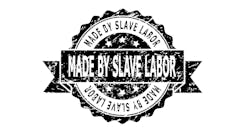If you have worksites in California, voluntarily allowing federal immigration officials to enter your premises will be a violation of law as of Jan. 1, 2018.
Yes, you read that right. The state enacted a new law called AB 450 that requires employers to demand to see a judicial warrant or subpoena from immigration officers before allowing them to enter your workplace. Failing to do so risks a $2,000 to $5,000 civil penalty for the first violation, and $5,000 to $10,000 for each subsequent violation.
AB 450 was just one of 11 new laws the state legislature and Gov. Jerry Brown have enacted with the declared intention of making sure California is a “Sanctuary State” for illegal immigrants.
Another law that was signed at the same time as AB 450 is more sweeping and has garnered the most attention in the media. Called SB 54, it ignited a major political confrontation with federal officials and that has exploded into the headlines throughout the state.
SB 54 bars state law enforcement officers from arresting people based on civil immigration warrants. The new law also prohibits them from asking about a person’s immigration status, keeping an undocumented inmate in jail on an immigration hold, or participating in any joint task force with federal officials for the purpose of enforcing immigration laws.
When Gov. Brown signed SB 54 into law, he declared, “These are uncertain times for undocumented Californians and their families, and this bill strikes a balance that will protect public safety while bringing a measure of comfort to those families who are now living in fear every day.”
Thomas Homan, acting director of Immigration and Customs Enforcement (ICE), is not impressed. He asserts that “SB 54 will negatively impact ICE operations in California by nearly eliminating all cooperation and communication with our law enforcement partners in the state.”
In reaction to the state’s unilateral action, he says, “ICE will have no choice but to conduct at-large arrests in local neighborhoods and at work sites, which will inevitably result in additional collateral arrests, instead of focusing on arrests at jails and prisons where transfers are safer for ICE officers and the community.”
Ultimately, Homan argues, “SB 54 helps shield removable aliens from immigration enforcement and creates another magnet for more illegal immigration, all at the expense of the safety and security of the very people it purports to protect.”.
Another one of the new laws, SB 29, orders city, county and state law enforcement agencies not to enter into a contract for any new detention centers to hold immigrants in custody. It also bars these officials from contracting with private companies for the purpose of building and managing immigration detention facilities. About 5,000 people currently are being held in more than 50 detention centers around California, ranging from larger facilities run by private companies to small county jails.
This new law actually creates a hardship for the detainees, according to Homan. “ICE will also likely have to detain individuals arrested in California in detention facilities outside of the state, far from any family they may have in California,” he says.
California officials have told federal immigration officials they should stay out of its courtrooms and state government offices. Earlier this year, state Labor Commissioner Julie A. Su created a stir when she ordered employees to require the presentation of warrants or subpoenas before allowing ICE officers to set foot in commission facilities.
Employers as Human Shields
But it is the other major immigrant protection law, AB 450, that creates a longer-term threat to employers by forcing them into a confrontation with federal authorities or run the risk of being hit with hefty penalties imposed by the state. California’s new labor law also includes detailed requirements regarding how and when employers will be expected to provide written notifications to their employees.
Employers must provide current employees with a notice of any inspection of I-9 forms or other employment records within 72 hours of receiving notice of the inspection. Bringing unions into the picture, the law requires that written notice must be provided to any collective bargaining representative within the same timeframe. The Labor Commissioner is tasked with developing a template that employers can use for this purpose by no later than July 1, 2018.
In addition, after receiving a reasonable request from an employee, an employer must provide him or her with a copy of the ICE Notice of Inspection of I-9 forms.
Later, after the federal inspection has been completed, employers must provide the employees (and their union representatives) with a copy of the inspection results within 72 hours of receiving it. This includes any written notice from ICE about the obligations of the employer and the affected employee that arise from the inspection.
Under the new law, the employer must deliver this notice by hand to the employee at the workplace if possible, or by mail and e-mail if hand delivery is not possible.
Any employer who fails to provide these required notices is subject to civil penalties that mirror those that apply to voluntarily allowing federal authorities to enter a worksite—$2,000 to $5,000 for a first violation, and $5,000 to $10,000 for each subsequent violation.
In addition, the new law prohibits an employer (or person acting on the employer’s behalf) from granting voluntary access to employee records for ICE in the absence of a subpoena or warrant. However, employers still can be ordered to produce I-9 forms and other documents in situations where ICE has supplied the employer with a Notice of Inspection.
AB 450 also prohibits an employer from re-verifying the employment eligibility of a current employee at a time or in a manner that is not specifically required by federal law. The California Labor Commissioner is authorized to recover civil penalties of up to $10,000 for violations of this re-verifying provision as well.
“Although immigration is an issue of federal law, with the enactment of AB 450 California has inserted itself—and the state’s employers—squarely in the middle of this debate,” observes Benjamin Ebbink, an attorney with the law firm of Fisher Phillips.
In light of these new restrictions, California employers will need to train supervisors and front-line staff about how to respond when ICE shows up at a worksite. “Many employers have expressed unease about being required to ‘stand up’ to ICE in this manner, and have expressed concern about what ICE’s potential reaction and response will be,” he says.
“Employers need to train their staff on how to tactfully react to these situations, or risk stiff penalties under the new law,” Ebbink says. Employers should start now in reviewing their policies and procedures to ensure they can verify compliance with the law.
In particular, California employers should train managers and appropriate staff about how to handle judicial warrants and subpoenas from ICE agents. “It may be prudent to have a documented policy in place on how to handle these situations when they arise,” Ebbink advises.
“In addition, employers will have to pay close attention to the employee notification provisions of the bill, and make sure that they are providing any required notices within the applicable timelines,” he warns.




